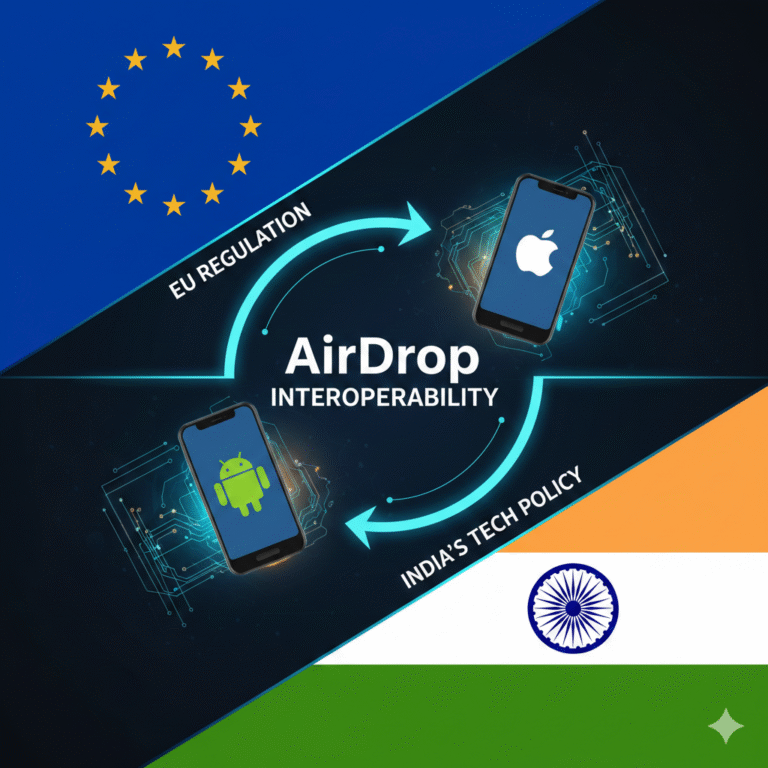
If 2023 was marked by the dominance of Large Language Models (LLMs), 2024 has seen a transformative shift toward Small Language Models (SLMs). These compact, efficient models are unlocking new opportunities across industries by delivering cutting-edge AI capabilities in resource-constrained environments. From mobile applications and IoT ecosystems to energy-efficient solutions and consumer devices, SLMs are redefining the landscape of artificial intelligence. This blog explores the diverse applications, benefits, and future potential of SLMs in 2024.
What Are Small Language Models (SLMs)?
Small Language Models are streamlined versions of traditional AI models, designed to operate efficiently on devices with limited computational power. Unlike their larger counterparts, SLMs rely on lightweight architectures that allow for:
- Offline Functionality: Reduced dependence on cloud-based systems.
- Lower Energy Consumption: Ideal for mobile devices, IoT, and rural environments.
- Localized Processing: Enhanced privacy and faster response times.
These features make SLMs a perfect fit for applications requiring minimal latency, low power, and high accessibility.
Revolutionizing Mobile and IoT Ecosystems
Microsoft Translator Lite: Bridging Language Barriers
One of the most notable SLM-powered applications in 2024 is Microsoft Translator Lite. By enabling real-time multilingual translations offline, this tool addresses the needs of over 70 million monthly users globally. It supports more than 50 languages, including emerging regional dialects like Swahili and Tamil, and has reduced data usage by 80% compared to cloud-based alternatives.
This innovation has particularly benefited regions with limited internet access. For example, small-to-medium enterprises in remote areas report a 40% boost in productivity thanks to improved communication facilitated by Translator Lite. Its low data requirements and offline capabilities are driving adoption among travelers, remote workers, and multilingual professionals.
Wearable Smart Assistants: Seamless Offline Functionality
Smart assistants powered by SLM technology are revolutionizing the wearable tech industry. Modern fitness trackers and smartwatches can now handle voice commands directly on the device, enabling features like setting reminders, activity tracking, and music control without relying on cloud processing. This advancement improves user privacy by ensuring data remains on the device and boosts battery life by an average of 20 additional hours. With more than 250 million wearable devices shipped in 2024, SLM-enabled smart assistants are raising the bar for convenience and performance in wearable technology.
PocketLens AI: Simplifying Research on the Go
PocketLens AI utilizes Small Language Models (SLMs) to process and summarize printed content scanned using smartphone cameras. This innovative app has proven invaluable for students and professionals, supporting more than 30 languages and offering tailored features for STEM-related texts. Launched in early 2024, PocketLens AI has already surpassed 10 million downloads, highlighting its significant impact on boosting productivity.
IoT Ecosystems: Smarter Homes, Localized Control
In smart homes, SLMs enable local voice command control for appliances such as lighting, thermostats, and security cameras. This eliminates reliance on cloud processing, reducing latency by 25% and enhancing data security. The global smart home market grew by 18% in 2024, with SLM-powered solutions accounting for a significant portion of new deployments.
Driving Energy Efficiency with SLMs
GreenBERT: Sustainability in Data Centers
GreenBERT is a standout example of SLM technology optimizing energy consumption. Designed specifically for enterprise data centers, this model achieved a 30% reduction in power usage in 2024, saving businesses approximately $1 billion annually. GreenBERT’s quantization techniques and hardware-efficient design exemplify how SLMs align with environmental and financial goals.
Tesla PowerWall AI: Smarter Energy Management
Tesla’s PowerWall AI integrates SLMs to optimize energy storage and distribution in smart homes. By analyzing solar panel output, electricity tariffs, and consumption patterns, the system delivers cost-effective recommendations. With over 500,000 units sold in 2024, PowerWall AI users report a 20% increase in energy savings, making it a cornerstone of sustainable living.
Low-Energy AI Sensors: Transforming Agriculture
SLM-powered sensors are revolutionizing agriculture by providing real-time crop monitoring in remote fields. These sensors analyze critical variables such as soil moisture, temperature, and weather conditions, helping farmers improve yields by an average of 15%. Their ultra-low power consumption ensures extended functionality using solar or battery power, making them ideal for rural and underdeveloped regions.
EcoPhone AI: Environmentally Friendly Smartphones
EcoPhone AI ushers in a new era of smartphones powered by highly efficient AI chips that consume minimal energy. These devices perform functions such as voice recognition, predictive text, and image enhancement directly on the device, leading to a reduction in energy usage of up to 40%. Having sold over 5 million units in the first half of 2024, EcoPhone AI is a popular choice among eco-conscious users looking for sustainable tech solutions.
Efficient Electric Vehicles: Extending EV Range
SLMs are increasingly integrated into electric vehicles (EVs) to optimize energy output dynamically. In 2024, approximately 40% of new EV models featured SLM-powered energy management systems. These models improved range by an average of 15%, with some achieving up to 20% under ideal conditions. This innovation has driven a 25% growth in global EV sales, addressing consumer concerns about range limitations and solidifying SLMs’ role in the automotive sector.
Enhancing Consumer Accessibility
Budget AI Phones: Bridging the Digital Divide
In 2024, Nokia and other brands introduced budget-friendly smartphones equipped with SLM-powered voice recognition technology. Priced under $100, these devices brought AI-driven features to over 10 million users in developing regions. With capabilities like voice-to-text dictation and hands-free navigation, these smartphones are bridging the digital divide and empowering first-time users in regions such as Africa and South Asia.
AI Text Simplifiers: Making Online Content Inclusive
SLMs drive tools that transform intricate web content into easier-to-understand formats. By adapting articles to different reading levels, these tools improve accessibility for non-native speakers and those with learning challenges. In 2024, browser plugins with this technology experienced a 50% rise in downloads, highlighting the increasing need for more inclusive digital solutions.
Language-Specific Apps: Supporting Regional Communication
SLM-driven AI keyboards are revolutionizing typing efficiency for regional languages. In India, for instance, predictive typing applications have boosted productivity by 30%, making digital communication more accessible to millions.
Voice Memo Organizers: Smarter Note-Taking
Applications like MemoGen use SLMs to automatically tag, sort, and summarize voice memos. This functionality has gained popularity among students and professionals, with downloads surpassing 1 million in 2024. Users can easily search for keywords and themes, streamlining information retrieval.
Offline Navigation: Dynamic Updates Without Internet
SLM-powered navigation apps offer offline route updates based on real-time factors like road closures or traffic conditions. In 2024, tools like NavigateSLM experienced a 35% growth in user base, becoming essential for travelers navigating remote areas.
Conclusion: SLMs and the Future of AI
Small Language Models are proving to be more than just a scaled-down version of LLMs; they represent a paradigm shift in how AI is developed and deployed. Their ability to operate efficiently in offline and low-power environments has democratized access to advanced technology, driving sustainability and innovation across industries. As we move forward, SLMs are set to play an even more pivotal role in shaping a future where AI is accessible, efficient, and environmentally responsible.
Whether it’s bridging language barriers, optimizing energy consumption, or enhancing consumer devices, SLMs have positioned themselves as the driving force behind AI’s evolution in 2024. Their impact is not just measured in technological advancements but also in the tangible benefits they bring to individuals, businesses, and society as a whole.
See more:









I appreciate how this blog simplifies complex AI topics without losing accuracy.
The small language model approach truly shows how innovation is evolving beyond size.
This post makes a strong case for small language models leading the next wave of AI innovation. The examples add real credibility to the argument.
Your point of view caught my eye and was very interesting. Thanks. I have a question for you.
Your article helped me a lot, is there any more related content?It might be helpful to mention key techniques enabling SLM performance — such as knowledge distillation, parameter-efficient fine-tuning (PEFT), or Mixture of Experts (MoE). Thanks!
Compact AI models are definitely the future—this post captures that perfectly.
Can you be more specific about the content of your article? After reading it, I still have some doubts. Hope you can help me.If you include performance metrics, cite benchmarks (like MMLU or MT-Bench) for credibility.Thanks
Verify that references to specific models (e.g., Phi-3, Gemma, Mistral, or LLaMA 3) are up-to-date and accurate in terms of size, capabilities, and licensing.
The discussion around deploying AI on smaller hardware through the small language model approach is fascinating. It makes advanced technology more accessible to everyone.
Can you be more specific about the content of your article? After reading it, I still have some doubts. Hope you can help me. You could add a short comparison table between SLMs and LLMs to visually highlight trade-offs (speed, cost, accuracy, energy efficiency).
Nicely written! Makes me optimistic about more sustainable AI systems.
This article perfectly captures how the small language model trend is changing the AI landscape. It’s exciting to see efficiency taking center stage over raw size and compute power.
Great explanation of what makes the small language model trend so important for 2025!
The balance between capability and efficiency that small models provide is inspiring. It’s like watching AI evolve toward sustainability.
Excellent overview of how smaller AI models are reshaping what’s possible on-device and in low-power environments. The future of AI definitely looks more compact.
Thanks!
I don’t think the title of your article matches the content lol. Just kidding, mainly because I had some doubts after reading the article.If the post includes technical details (like model architectures or quantization methods), ensure you balance them with simple explanations or analogies for non-experts.
I love how this post explains the rise of the small language model so clearly. It’s refreshing to see innovation shifting toward smarter, lighter AI solutions.
Interesting read! AI doesn’t always have to be huge to be effective.
Great read! The small language model concept seems ideal for balancing performance and energy efficiency—two areas that often compete in AI development.
The rise of the small language model feels like a game changer for accessibility.
Consider briefly explaining what “small” means in this context — e.g., smaller parameter count, lower compute requirements, or specialized architectures — for readers new to the concept.
The post does a great job addressing an emerging trend — Small Language Models (SLMs) are indeed reshaping how we think about efficient AI.